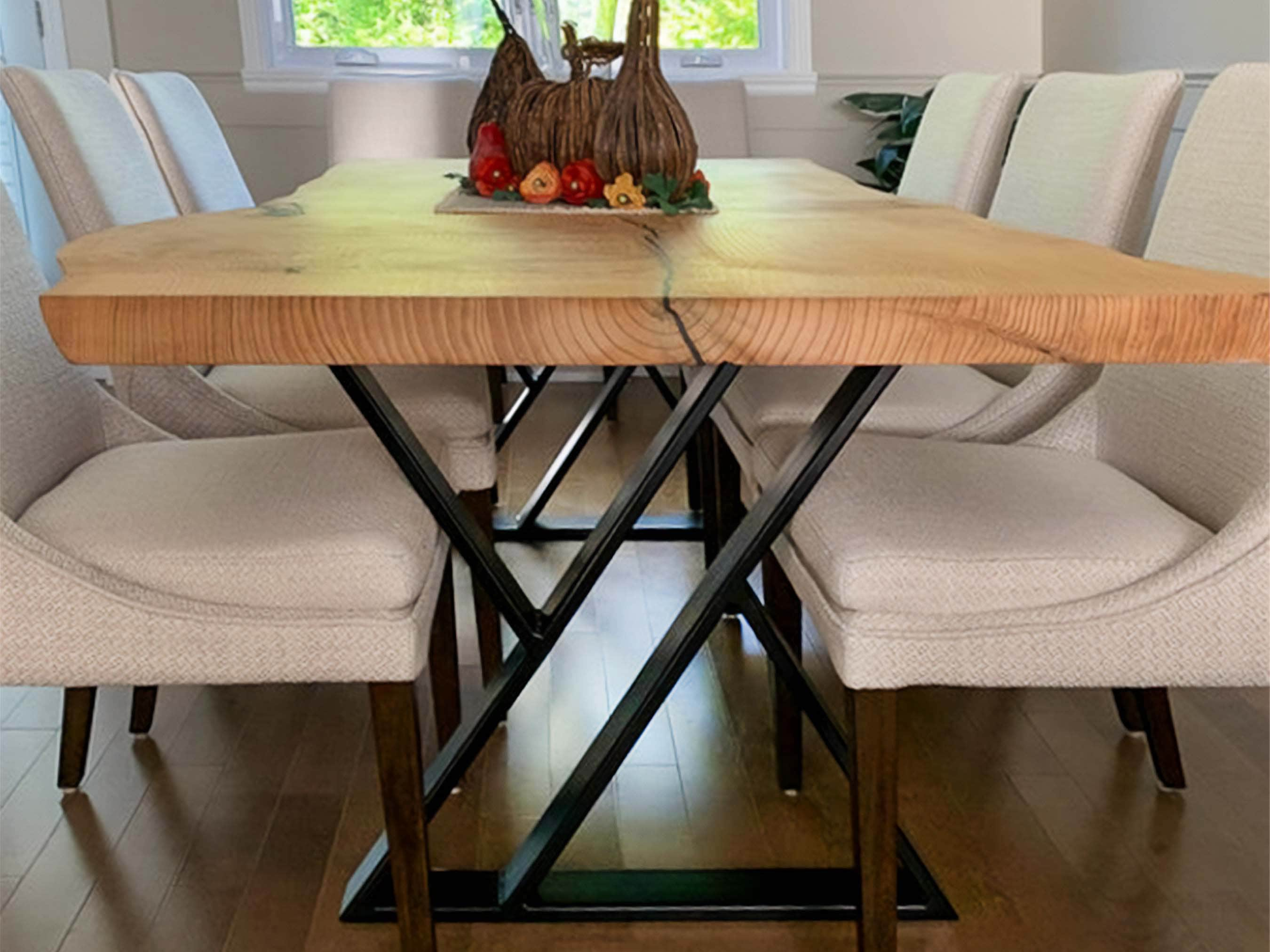A Thorough Check Out Eating Table Leg Styles: Locating the Suitable Match
Choosing the appropriate eating table leg style is crucial for both visual appeal and practical performance. For those with bigger tables, trestle legs ensure durable support, whereas barrette legs introduce a mid-century contemporary ambiance with their minimal style. The x-shaped legs mix contemporary style with enhanced security.
Standard Four Legs
Among the different sorts of eating table leg styles, the standard four-leg style continues to be a timeless choice for numerous houses. This classic arrangement supplies an unified blend of functionality and aesthetic appeals, making it a seasonal favorite. Four legs offer balanced support, ensuring the table continues to be stable and efficient in birthing substantial weight. This is particularly advantageous for families that frequently organize large celebrations or utilize their dining table for numerous purposes, such as work or crafting.
From an aesthetic perspective, the traditional four-leg layout can be easily adapted to various indoor designs. Whether crafted from timber, steel, or a combination of materials, these legs can be delicately sculpted, smooth and minimalistic, or anything in between. Their convenience allows them to complement both rustic and modern settings perfectly.
In addition, the simple framework of the four-leg design helps with simplicity of motion and placement within a room. Unlike more facility bases, this design lessens obstructions, offering enough legroom for restaurants. In summary, the conventional four-leg dining table leg style weds sustaining beauty with practical functionality, making it a sharp option for those seeking both type and function in their eating furniture.
Pedestal Base
Typically commemorated for its sophisticated and space-efficient style, the stand base is a distinguished alternative to the traditional four-leg configuration in eating table leg designs. Without edge legs, restaurants are afforded greater freedom of movement, making it an ideal option for round and oblong tables that advertise even more intimate and comprehensive gatherings.
Additionally, the stand base's central support can take care of substantial weight, allowing for using larger table tops, such as marble or thick hardwood. This strength paired with its visual versatility makes the pedestal base a preferred choice in both conventional and contemporary indoor settings. It can seamlessly incorporate with numerous layout motifs, from timeless style to minimalist modernity. Additionally, the main column itself supplies a canvas for intricate styles and artistic expressions, adding a component of visual passion under the table. In recap, the stand base incorporates capability with style, making it a fine-tuned and functional option for diverse dining settings.
Trestle Legs
Trestle legs supply a durable and ageless structure for eating tables, identified by their horizontal cross-bracing and strong support beams. Stemming from medieval times, this layout has developed yet kept its vital framework, making it a seasonal fave in both traditional and contemporary settings. The central trestle beam of light, commonly supported by two or even more vertical articles, uses exceptional security, permitting for larger table lengths without the requirement for added legs.
A substantial advantage of trestle leg tables is the enough legroom they use. Unlike tables with four edge legs, the absence of blockages at the table's edges gives unblocked room for chairs and restaurants, improving comfort and availability. This makes trestle tables perfect for fitting larger events, whether in a dining area or a reception hall.
From rustic farmhouse to sleek modern-day layouts, trestle legs can be personalized to match private tastes. Their enduring allure and functional benefits make trestle legs a compelling choice for those looking for both design and you can try these out practicality in their eating table.
Hairpin Legs

The charm of hairpin legs depends on their simpleness and flexibility - dining room table legs. Available in a series of products, consisting of steel and brass, they can be completed in numerous colors to enhance various indoor designs. Whether matched with a rustic wood table top or a contemporary glass surface, barrette legs easily blend capability with a touch of classic beauty
Longevity is an additional remarkable feature of barrette legs. In spite of their delicate look, these legs are engineered to bear considerable weight, making certain the dining table stays secure and secure. In addition, they are fairly simple to set up, making them a preferred selection for DIY lovers and specialist furnishings manufacturers alike.
X-Shaped Legs

Constructed from products such as steel, timber, or a mix of both, X-shaped legs can be tailored to match numerous layout choices. Steel legs frequently offer a sleek and industrial feeling, ideal for loft-style go now homes and modern-day dining rooms.
Additionally, the design behind X-shaped legs ensures even weight circulation, reducing the danger of tottering and enhancing resilience. This makes them particularly appropriate for bigger table that call for additional assistance. Essentially, X-shaped legs blend functional engineering with contemporary looks, making them a timeless choice for diverse dining atmospheres.
Verdict
A thorough understanding of dining table leg styles exposes the distinctive qualities and benefits of each design. Conventional 4 legs offer stability and timeless charm, while pedestal bases offer legroom and a structured look. Trestle legs ensure durable assistance for larger tables, and hairpin legs introduce a mid-century contemporary visual. X-shaped legs incorporate contemporary design with enhanced security. Picking the appropriate leg design makes certain both useful and visual contentment in any dining space.